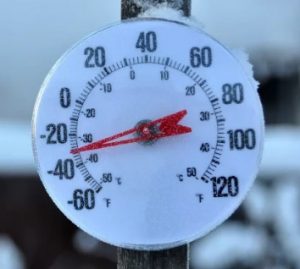According to the National Weather Service, frostbite can occur within five minutes in temperatures between 0 degrees and -19 degrees Fahrenheit. Protective clothing is the most important way to avoid cold stress. The type of fabric also makes a difference. Cotton loses its insulation value when it becomes wet. Wool, silk and most synthetics, on the other hand, retain their insulation even when wet.
The following are recommendations for working in cold environments:
- Keep a change of dry clothing available in case work clothes become wet.
- Wear at least three layers of clothing. An inner layer of wool, silk or synthetic to wick moisture away from the body. A middle layer of wool or synthetic to provide insulation even when wet. An outer wind and rain protection layer that allows some ventilation to prevent overheating.
- Wear a hat or hood. Up to 40 percent of body heat can be lost when the head is left exposed.
- Wear insulated boots or other footwear.
- Keep a change of dry clothing available in case work clothes become wet.
- With the exception of the wicking layer do not wear tight clothing. Loose clothing allows better ventilation of heat away from the body.
- Do not underestimate the wetting effects of perspiration. Very often, wicking and venting of the body’s sweat and heat are more important than protecting from rain or snow.
- Remember that it is important to stay hydrated in cold weather too.
For additional information click on the links below:
Cold Stress Guide
Winter Weather Safety
Snow Removal
Be safe in your travels and stay warm!












